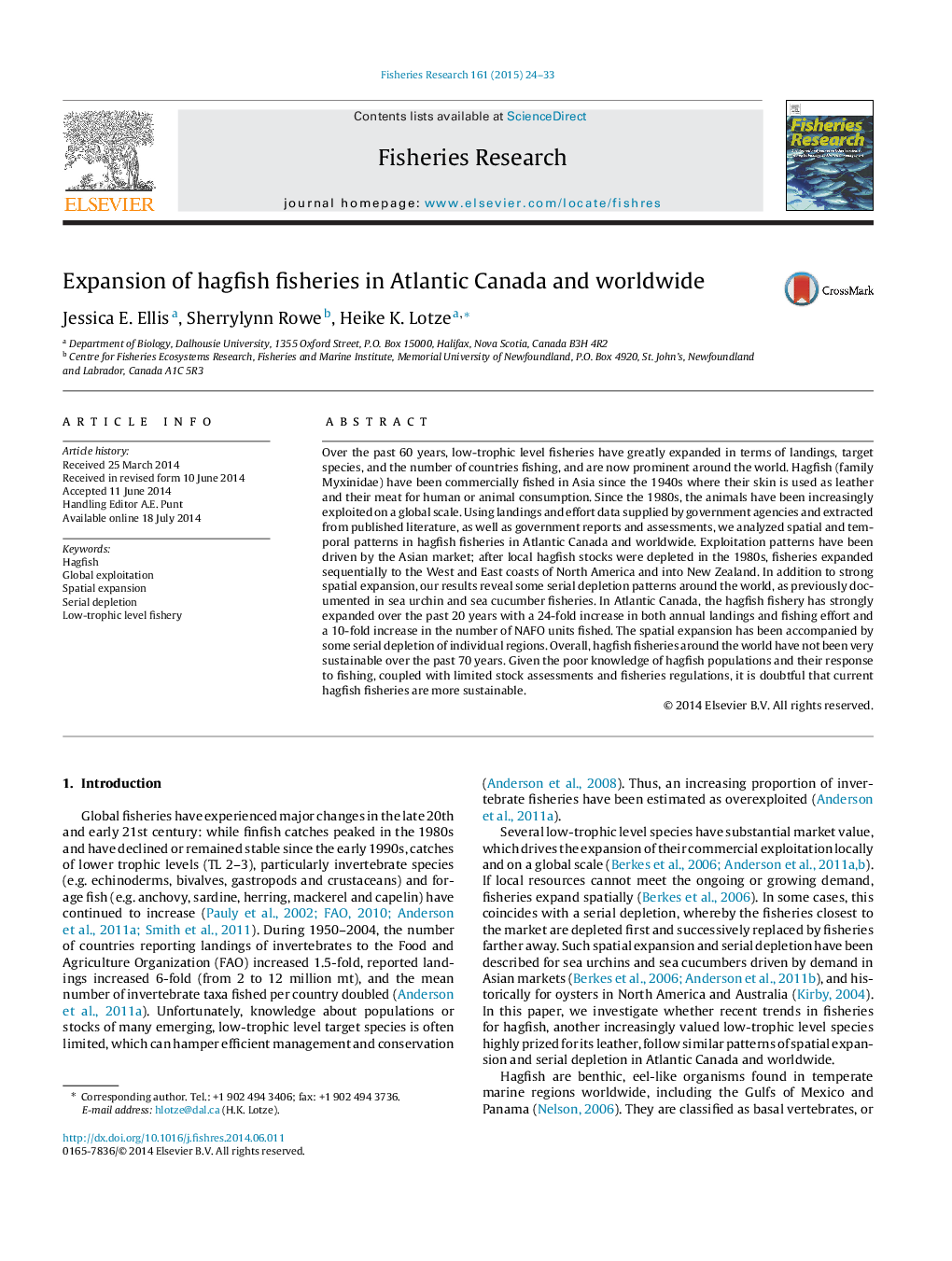| کد مقاله | کد نشریه | سال انتشار | مقاله انگلیسی | نسخه تمام متن |
|---|---|---|---|---|
| 6385768 | 1626807 | 2015 | 10 صفحه PDF | دانلود رایگان |
- Records of Canadian and worldwide hagfish fisheries were compiled.
- Declining landings in Japan and Korea triggered a worldwide expansion in the 1980s.
- Global hagfish fisheries show strong spatial expansion and some serial depletion.
- Landings, effort and fishing areas in Atlantic Canada have strongly increased.
- Limited knowledge, stock assessment and fishery regulation impair management.
Over the past 60 years, low-trophic level fisheries have greatly expanded in terms of landings, target species, and the number of countries fishing, and are now prominent around the world. Hagfish (family Myxinidae) have been commercially fished in Asia since the 1940s where their skin is used as leather and their meat for human or animal consumption. Since the 1980s, the animals have been increasingly exploited on a global scale. Using landings and effort data supplied by government agencies and extracted from published literature, as well as government reports and assessments, we analyzed spatial and temporal patterns in hagfish fisheries in Atlantic Canada and worldwide. Exploitation patterns have been driven by the Asian market; after local hagfish stocks were depleted in the 1980s, fisheries expanded sequentially to the West and East coasts of North America and into New Zealand. In addition to strong spatial expansion, our results reveal some serial depletion patterns around the world, as previously documented in sea urchin and sea cucumber fisheries. In Atlantic Canada, the hagfish fishery has strongly expanded over the past 20 years with a 24-fold increase in both annual landings and fishing effort and a 10-fold increase in the number of NAFO units fished. The spatial expansion has been accompanied by some serial depletion of individual regions. Overall, hagfish fisheries around the world have not been very sustainable over the past 70 years. Given the poor knowledge of hagfish populations and their response to fishing, coupled with limited stock assessments and fisheries regulations, it is doubtful that current hagfish fisheries are more sustainable.
Journal: Fisheries Research - Volume 161, January 2015, Pages 24-33
